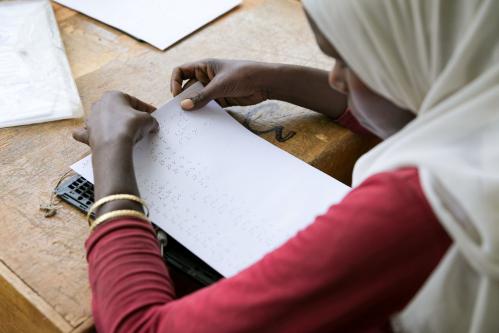The first semester of 2022 generated a wealth of research on social protection. Having reviewed about 500 papers on the theme since January, let me share a rapid selection of 40 exciting materials across 10 themes that you may want to take with you on vacation.
1. Health and nutrition
A meta-analysis by Manley et al. found that cash transfers reduce both child stunting and wasting, but only by 1.3 percent. Morais et al. show that compared to municipalities with low cash-transfer coverage, Brazilian areas with high coverage reduced AIDS incidence between 4.4-13.1 percent. Globally, a systematic review of the effects of cash transfers and other programs on HIV by Stoner et al., concludes that “Cash transfer [and] programs that incentivize school attendance among adolescent girls and young women show the greatest promise.” A review by Ahmed et al. documents the positive effects of cash in reducing “neglected tropical diseases” (leprosy, schistosomiasis, and soil-transmitted helminthiasis). Roelen and Rodriguez summarize the effects of cash transfers on water, sanitation, and hygiene (WASH) outcomes. And Cygan-Rehm and Karbownik show that in Poland, a one-off cash transfers conditioned on prenatal visits decreased fetal deaths and improved birth weight.
2. Education
A meta-analysis of conditional cash transfers on education by García and Saavedra shows that there are clear effects on schooling, little impacts on learning, and relatively high costs of implementation. Evans et al. have a handy Excel database of more than 100 studies on the matter.
3. Economic returns
Aizer et al. stress the need to consider benefits over time: “Once the positive long-run benefits to children are considered, many safety net programs are cost-effective … . Limiting the time horizon for cost-benefit calculations … often fails to take this into account.” In Rwanda, Taylor et al. estimate the economic multipliers of cash transfers in the context of Congolese refugees and find that “an additional refugee getting cash increases annual real income in the local economy by $205 to $253, significantly more than the $120-$126 … each refugee receives.”
4. Brain and stress
A study on cash transfers in the U.S. by Troller-Renfree et al. found that children with mothers receiving larger cash benefits showed better brain development (effect sizes = 0.17 to 0.26) compared to infants with mothers receiving lower cash amounts. Jaroszewicz et al. show that cash transfers can augment stress among beneficiaries. This is because transfers operate within an ecosystem of hopes, dynamic needs, pressures, and expectations—all of which amplify and exert more psychological pressure when a windfall of cash materializes. What happens when you provide a lump sum of cash, psychosocial support, or both cash and support? In Niger, Bossuroy et al. detect positive effects across these three treatment arms, but interventions with a psychosocial component were most cost-effective.
5. Crises
A cocktail of three concomitant crises is prompting governments around the globe to set out 5,000 social protection measures: There are 3,856 social protection measures in response to COVID-19 in 223 economies; an additional 730 programs established by 41 countries for displacement caused by the war in Ukraine; and a further 221 measures countering soaring prices of food, fuel, fertilizers, and other items in 84 economies (updated version out in a few days).
Beyond quantitative trends, what are we learning from evaluations and implementation of those responses? I lay out a range of lessons and reflections on cash transfers in pandemic times.
A trio of studies on Cameroon (Levine et al), Greece (Tramountanis and Levine), and Colombia (Ham et al) shed light on various factors preventing integration of humanitarian assistance and social protection for displaced populations. Development initiatives estimate that 21 percent of humanitarian aid is now cash-based, but only 0.6 percent of total assistance is channeled via national governments. And such “parallel” systems are also evident in Ukraine, as Stoddard et al. document.
6. Politics and trust
“State capacity alone is insufficient. Vitally, national and local political dynamics shape the ways in which this state capacity is deployed in program implementation.” That’s a key takeaway from Laver’s edited book on the politics of distributing social transfers in Ethiopia, Rwanda, Ghana, Kenya, Bangladesh, and Nepal. What happens when conflict erupts in the middle of program implementation? In South Sudan, Budjan et al. investigate the diverging fates of participants that got the grant and those that didn’t: The latter displayed reductions in consumption and trust, suggesting psychological repercussions due to the program’s cancellation.
7. Child labor
A review by ILO and UNICEF found that that about 60 percent of the 62 examined studies report “unambiguous reductions in children’s engagement in productive activities” (i.e., economic activities and/or household chores). Marcillo et al. show that in Colombia, cash transfers help keep children in school, but “women are the ones who compensate for the lost labor at home when older children stay longer in school.” And Sviatschi shows that in Peru, participation in conditional cash transfers reduced child labor and this, in turn, decreased coca production by 34 percent.
8. Gender
A review of 70 systematic reviews on social protection and gender by Perera et al. found that having explicit gender objectives leads to higher effects than setting broad goals, but there can be some adverse and unintended consequences. A brief by Peterman and Roy offers practical tips on adapting cash transfers to prevent and mitigate gender-related intimate partner violence. And in India’s Bihar state, Gelb et al. show that women cash beneficiaries who are illiterate and living in a household with no smartphone have a probability of reporting the use of digital payments of below 4 percent.
9. Access to benefits
Immervoll et al. show that among eight high-income countries, there is only a limited gap between social protection coverage provisions accorded to standard versus “nonstandard” workers (i.e., self-employed, part-timers, and those in unstable wage employment). De Schutter’s report on the “non-take-up” of social protection programs illustrates that program awareness, application information, cumbersome processes, and stigma can hamper program access by eligible populations. And the Organization for Economic Cooperation and Development shows that forcibly displaced populations often have access to social protection “on paper,” but not in practice.
10. Design choices
Hammad navigates key transfer-related choices, like determining transfer values, timing, duration, frequency, and digital vs. manual payments. In Niger, Bossuroy et al. compare the cost-effectiveness of alternative “graduation” models on economic and psychosocial outcomes, while Premand and Barry found that parenting trainings were more effective than cash alone on early childhood development. Dwyer et al contrast 87 programs in high– vs. low- and middle-income countries and found that cash transfers in advanced economies have steeper benefit “cliffs.” Grosh et al. have a new edited volume on targeting in social assistance placing an emphasis on the role of delivery systems in shaping targeting outcomes. Della Guardia et al. illuminate the animosity, resentment, and divisions within communities in Chad. And in Kenya, Haushofer et al. argue that reaching the most “impacted”—as opposed to the most “deprived”—might be societally beneficial.
The Brookings Institution is committed to quality, independence, and impact.
We are supported by a diverse array of funders. In line with our values and policies, each Brookings publication represents the sole views of its author(s).




Commentary
Summer readings on cash transfers and social protection
July 19, 2022